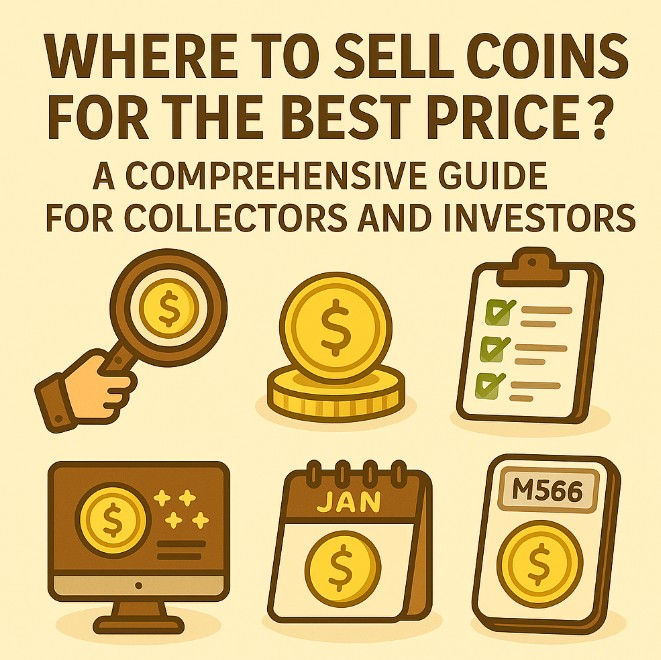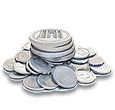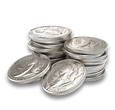The Cost of Selling Gold and Silver Investments
- GoldsilverJapan

- Sep 22
- 5 min read
What Every Investor Needs to Know Before Liquidating Precious Metals
Introduction: Selling Gold and Silver Isn’t Free
Selling your gold or silver investment isn’t as simple as walking into a dealer’s shop and walking out with cash. There are hidden fees, spreads, taxes, premiums, shipping charges, and even potential losses if you’re not careful.
Whether you’re a seasoned investor or a beginner looking to cash out, understanding the true cost of selling your gold and silver is critical to maximizing your returns and avoiding unexpected losses.
Table of Contents
Why Investors Sell Gold and Silver
Types of Gold and Silver Investments
Dealer Spreads: The Invisible Loss
Taxes and Reporting Requirements
Hidden Costs You May Not Realize
Selling Methods Compared
Real-World Selling Examples
How to Minimize Selling Costs
What Buyers Look For (and Pay More For)
Key Takeaways
1. Why Investors Sell Gold and Silver
Some common reasons include:
Market Timing: Investors may believe the price has peaked.
Emergency Cash Needs: Precious metals can be a financial safety net.
Portfolio Rebalancing: Investors may reduce metal exposure.
Profit-Taking: When prices surge, sellers cash in.
Regardless of your reason, knowing the cost of exit is just as important as knowing the right time to enter.
2. Types of Gold and Silver Investments
Before selling, you must first identify what you own, as this influences the resale value and associated costs:
Gold and Silver Types:
Bullion Coins: e.g., American Eagles, Canadian Maples, Britannias.
Bullion Bars: 1 oz, 10 oz, 1 kg, etc., usually from mints like PAMP, Perth Mint, or Tanaka.
Junk Silver: Pre-1965 US coins, Japanese silver 50 sen, etc.
Numismatic Coins: Rare or collectible, often with higher premiums.
Semi-Numismatic: Like Queen’s Beasts or Australian Swans—may carry initial hype but resell near bullion value later.
Each carries different liquidity, premiums, and buyer demand.
3. Dealer Spreads: The Invisible Loss
What Is a Dealer Spread?
This is the difference between what a dealer buys from you (bid price) and what they sell the same item for (ask price). It's the dealer’s profit margin.
Example: If the gold spot price is $3,700/oz:
Dealer buys your 1 oz coin for $3,550
Sells it for $3,820
Spread = $270
This means you lose approximately 7.3% of your value immediately unless gold appreciates.
Important Notes:
Spreads vary depending on market conditions, supply and demand, and the specific product.
During times of high volatility, spreads tend to widen. In calm markets, they narrow.
Some dealers add fees on top of the spread, such as transaction or handling charges, which further reduce your take-home amount.
Typical Spreads (for general understanding):
Item | Average Spread (Estimate) |
1 oz Gold Bar (Generic) | Tightest (2%–3%) |
1 oz Gold Coin (Popular) | Medium (3%–6%) |
Silver Bars & Rounds | Wider (5%–10%) |
Junk or Unpopular Silver | High (10%–15%) |
Rare Coins | Variable (20%+) |
4. Taxes and Reporting Requirements
When you sell gold or silver, the profits may be subject to taxation, depending on your country or region. Laws vary widely, so it’s important to:
Track your cost basis (original purchase price) for each item.
Keep records of when and how much you purchased or sold.
Be aware that some buyers report large transactions to tax authorities.
There may be capital gains taxes if you’ve made a profit, or loss deductions if you’ve sold at a loss. Always check the current tax laws in your jurisdiction and consult a professional if needed.
In some countries (e.g., Japan), you may also be asked for identification or documentation, especially when selling large volumes. Dealers may also be required to have proper licensing (such as Kobutsu-sho in Japan) to legally buy from individuals.
5. Hidden Costs You May Not Realize
Here are often-overlooked factors that impact how much you take home:
📦 Shipping and Insurance
When selling to an online dealer:
You pay for secure, insured shipping (can be $30–$100+)
You bear the risk until the package is received and confirmed.
🔍 Authentication or Testing Fees
If coins or bars are not sealed, dealers may charge for testing (acid test, XRF scan, ultrasonic).
Expect to pay $5–$30 per item if testing is required.
📄 Minimum Sell Requirements
Some dealers have a minimum transaction amount (e.g., $500+).
You might need to group items together to meet thresholds.
⏳ Payment Delay
Wire transfers can take days to process.
Checks may be held until cleared.
In peer-to-peer sales (like Mercari or Yahoo Auctions), delays can result from disputes or buyer hesitation.
6. Selling Methods Compared
Each option comes with unique pros and cons:
Method | Pros | Cons |
Local Dealer | Fast cash, no shipping | Lower payouts, limited competition |
Online Dealer | Competitive prices, trusted brands | Must ship safely, payment may take days |
Auction Site | Potential for high bids on rare items | Listing fees, scams, slow turnaround |
Private Buyer | Can negotiate best prices | Security risk, hard to verify legitimacy |
Coin Shows | Engage collectors directly | Travel/time costs, pricing is variable |
Pawn Shops | Immediate sale | Usually offer the lowest price |
7. Real-World Selling Examples
📍 Case A: Selling 10 oz Silver Bar to Local Shop
Spot: $42/oz
Offer: $36/oz → $360 total
Spread = $60 lost
📍 Case B: Selling 1 oz Gold Maple Online
Spot: $3,700
Offer: $3,580
Shipping & insurance: $30
Net = $3,550
Your choice of selling channel can easily make or break your return.
8. How to Minimize Selling Costs
Here’s how savvy investors protect their gains:
✅ Choose Recognized Products
Coins like Gold Eagles, Britannias, Maples trade more easily with tighter spreads.
✅ Sell in Volume
Larger deals usually fetch better per-unit prices.
✅ Use Licensed Dealers
In countries like Japan, dealers with Kobutsu-sho licenses are legal and safe options.
✅ Compare Offers
Get quotes from 2–3 sources before committing.
✅ Consider the Market Timing
Sell when demand is strong (e.g., financial uncertainty or inflation periods).
9. What Buyers Look For (and Pay More For)
Want to get top dollar? Ensure your metals:
Are sealed or in original packaging
Have clear markings and certificates
Are from well-known mints:
Perth Mint
Royal Mint (UK)
Royal Canadian Mint
Germania Mint
Tanaka Kikinzoku (Japan)
Also, coins with limited mintage, proof finishes, or historic significance can command premiums if you find the right buyer.
10. Key Takeaways
Selling precious metals is more than a simple transaction—it’s a strategy.
What to Remember:
Understand spreads and all fees involved
Track and prepare for tax obligations
Use reputable, licensed dealers
Always compare multiple options
Keep your items in good condition to attract premium offers
🏷️ Where to Sell Your Gold and Silver
Looking for trustworthy options?
Here are platforms known for reliability and strong buyback practices:
Apmex – Leading U.S. dealer with online buyback system
Tanaka Kikinzoku – Established Japanese dealer with walk-in and digital services
GoldSilverJapan – Specializes in global bullion products, competitive pricing, and Japanese customer service
Final Thoughts
Just like buying precious metals requires research, selling them does too. Every percentage point matters. Knowing how the cost of selling is structured helps you retain more of your investment.
Whether you’re selling for profit, liquidity, or rebalancing, take the time to:
Evaluate the market conditions
Choose the right place to sell
By understanding the costs—from dealer spreads to shipping and taxes—you’ll protect yourself from surprises and walk away with confidence.











Comments